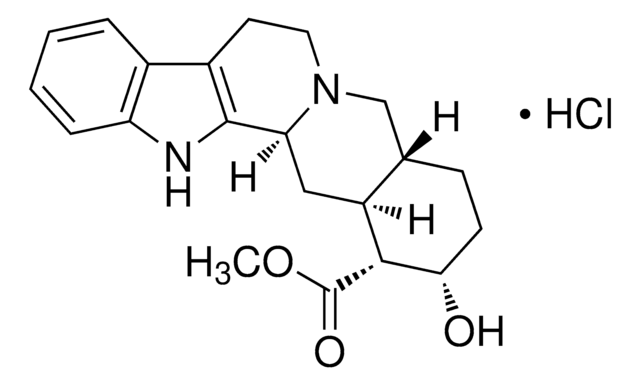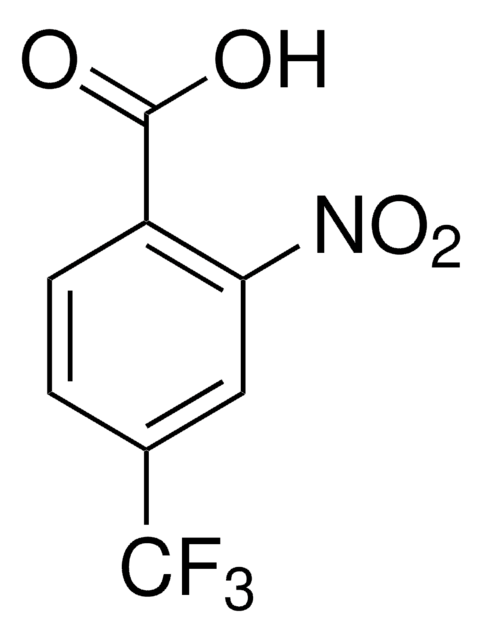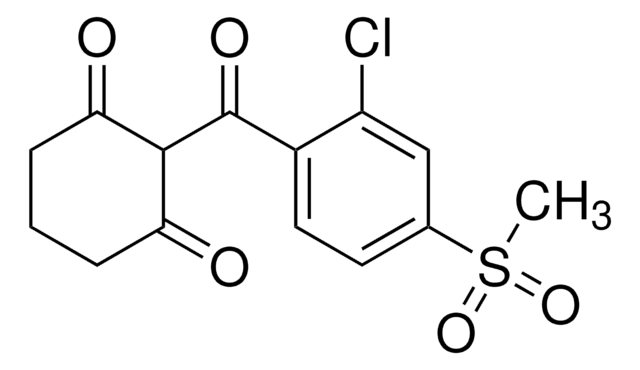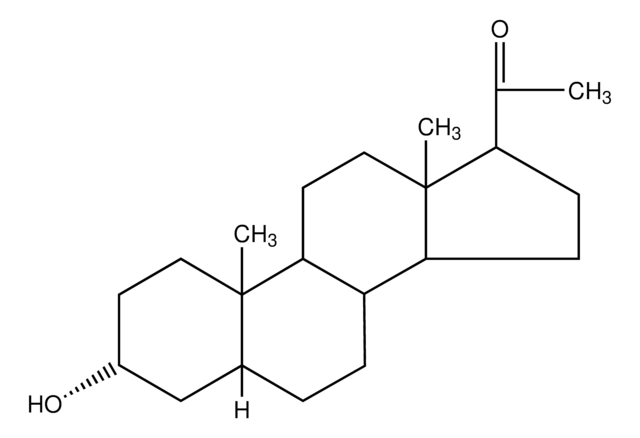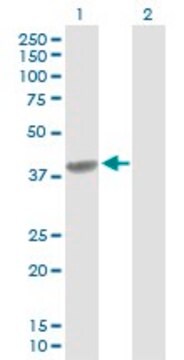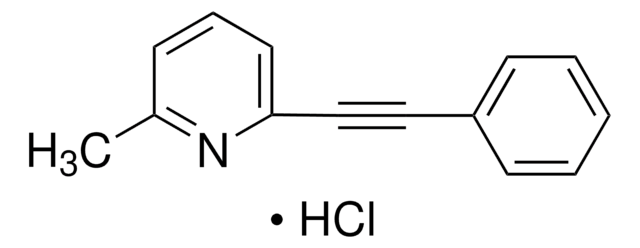SML0269
Nitisinone
≥95% (HPLC)
Sinonimo/i:
2-(2-Nitro-4-trifluoromethylbenzoyl)-1,3-cyclohexanedione, 2-[2-Nitro-4-(trifluoromethyl)benzoyl]cyclohexane-1,3-dione, NTBC, Nitisone, SC 0735
Scegli un formato
Scegli un formato
About This Item
Prodotti consigliati
Saggio
≥95% (HPLC)
Stato
powder
Colore
white to brown
Solubilità
DMSO: ≥5 mg/mL
Temperatura di conservazione
−20°C
Stringa SMILE
[O-][N+](=O)c1cc(ccc1C(=O)C2C(=O)CCCC2=O)C(F)(F)F
InChI
1S/C14H10F3NO5/c15-14(16,17)7-4-5-8(9(6-7)18(22)23)13(21)12-10(19)2-1-3-11(12)20/h4-6,12H,1-3H2
OUBCNLGXQFSTLU-UHFFFAOYSA-N
Informazioni sul gene
human ... HPD(3242)
Cerchi prodotti simili? Visita Guida al confronto tra prodotti
Applicazioni
- to induce liver injury[1]
- to treat Ixodes scapularis tick cells to inhibit the activity of hydroxyphenylpyruvate dioxygenase[2]
- in supplemented water to block the accumulation of toxic metabolites in human hepatocyte engrafted mice[3]
- to study its effect on bacterial pyomelanin production[4]
Azioni biochim/fisiol
Codice della classe di stoccaggio
11 - Combustible Solids
Classe di pericolosità dell'acqua (WGK)
WGK 3
Punto d’infiammabilità (°F)
Not applicable
Punto d’infiammabilità (°C)
Not applicable
Scegli una delle versioni più recenti:
Certificati d'analisi (COA)
Non trovi la versione di tuo interesse?
Se hai bisogno di una versione specifica, puoi cercare il certificato tramite il numero di lotto.
Possiedi già questo prodotto?
I documenti relativi ai prodotti acquistati recentemente sono disponibili nell’Archivio dei documenti.
Active Filters
Il team dei nostri ricercatori vanta grande esperienza in tutte le aree della ricerca quali Life Science, scienza dei materiali, sintesi chimica, cromatografia, discipline analitiche, ecc..
Contatta l'Assistenza Tecnica.
